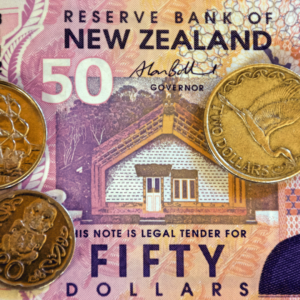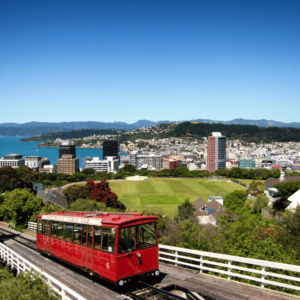When Will The High Cost of Living End?
Last month we addressed the high costs of rent and mortgage payments, food, transport and petrol expenses we are all grappling with and made a couple of suggestions as to how to manage the expense of breathing. This month, we’ll look at what has caused these costs to rise. This in turn will help us make a prediction as to when we can expect to let out a sign of relief as then the tide will have turned.
The Inflation Monster
You can thank Inflation for the high costs we currently pay for life’s basic essentials. That’s not the end of the matter however. Like all things, we need to understand the causes of inflation in order to control it.
As I see things a myriad of intersecting factors have brought about the inflation monster. The opening scene in Aotearoa which commenced inflations rise to dominance commenced with a world supply shock. You’ll know it as Covid. This pandemic event put a right royal spoke in the economic wheel, triggering (amongst other matters) disruptions to supply chains. Ultimately, those disturbances lead to shortages of goods and sudden price increases.
People were willing to pay the high prices charged for products and help as both were in short supply. In effect, demand outweighed supply. Inventories of existing stock got used up extremely quickly, factory productions ceased, demand grew and so did prices. Suppliers put up their prices because they could and because they needed to. We purchased what we could, thinking ourselves lucky if we were able to obtain what we needed when goods and services were so scarce. Good old-fashioned demand-pull inflation began.
The Reserve Bank assisted us in our procurement efforts by lowering the Official Cash Rate (OCR). This meant our registered banks could borrow at extremely low rates and in turn lend to us at rates unseen previously. In essence, monetary policy, favourable at the time, induced us to consume credit (borrow) and spend. Consequently, money supply increased, spiking demand-pull inflation further.

Contemporaneously with our central bank lowering the OCR, our Government in a bid to keep the economic engines running, introduced legislation. In particular, positive taxation legislation and policies were enacted which lessened the immediate burden companies felt. Individuals benefited from policies of the day through the receipt of subsidies. Whilst these fiscal policies kept the economy going, they also stimulated demand further, increasing inflation.
Companies undoubtedly needed assistance at the time as they themselves were dealing with a variety of cost increases. Increased prices paid for materials (inputs) and high transportation costs are but some of the never-ending expenses businesses were dealing with. Typical cost-push inflation was in operation. A large spike in cost employers had to contend with was wage-price spirals for labour employed. Individuals found they could demand higher wages as their help was in short supply. Employers gladly paid the climbing expense feeling fortunate they could procure the labour they needed in a dwindling market. Increased labour costs merely escalated cost-push inflation and demand-pull inflation effects.
As we came to grips with the new Covid world we lived in, we formed expectations about prices. Mainly we thought prices would continue to rise and this drove us to buy today in an attempt to avoid paying more tomorrow. Like many prophecies, our expectations became self-fulfilling, leading to further increases in inflation. Businesses also engaged in predictions, especially in relation to forecasts of profitability. Their predictions didn’t show a rosy picture. To retain profit margins, and ward off lower profits and loss situations, businesses pre-emptively increased their sale prices.
The High Cost of Living
In totality, many factors were at play that caused the inflation we are currently wrestling with. A major supply shock coupled with our own behaviours, production costs, monetary and fiscal policies, expectations and predictions have all played their part in driving inflation upwards. Concentrating on a couple of causes such as policies the Reserve Bank and the Government introduced, is intellectually lazy and incorrect. Multifaceted intertwined factors were at play. Laying blame on others’ doorsteps is unhelpful too. Even donkeys can appear to be Einstein’s with the benefit of hindsight. A more profitable use of time is to determine ways in which to affect the drivers to turn the inflation dial down. After all, maintaining inflation at the magical number of between 1% and 3% is beneficial for all, as this is where the value of money is maintained and economic stability is found.
So what will bring inflation down and how long will this take?
Ask two economists these questions and unsurprisingly as we are traversing unknown territory, you’ll likely get 22 answers. What is clear is if we decrease our demanding and consuming activities, inflation will respond in kind and start to abate.
Enter The Reserve Bank
To help us on our journey, the Reserve Bank has stepped up to the plate once again, progressively and continuously increasing the OCR. Predictably, bank lending rates have risen on the back of these OCR increases. Many Kiwis with mortgages are now paying much higher mortgage repayments than what they were previously. In some instances, landlords have increased rents endeavouring to offset their increased loan costs. This in turn has affected tenants, causing their rental payments to increase. Overall, these groups have tightened their belts and reined in their spending.

Companies have felt the impact of increased borrowing costs too. This has forced them to look hard at their spending, often putting off commencing capital projects, leading to a decrease in labour needed and a subsequent sight increase in unemployment. Wage spirals seem to have ceased. Overall, as a Nation, we’ve begun to curtail our spending and voilà, inflation has started its descent.
Whilst we expect inflation to fall further and with it, current costs of living, increased mortgage and rental payments will not be enough to bring it back into statutory line. Other criteria must come into play such as increases in production and openings of transportation. Just like a combination of drivers placed us in the high inflation square on the board, so will a variety of them move the counter to a lower number on the dice. In the interim, we’ve all got to battle on. Hopefully, last month’s article will help you in this endeavour, click here if you missed it.
October 2023, much of New Zealand will concentrate on the elections. I’ll be busy myself reviewing and presenting various parties’ policies and their probable effects. For this reason, you won’t receive an article from me in October but I’ll pop up in Money Talks in November. Perhaps that will be an ideal time to think about how we should greet Father Christmas this year. Until then, ciao to my readers.
Janet Xuccoa
Trust Advisor
BCom – LLB
JanetXuccoa.com
BWTS.co.nz
